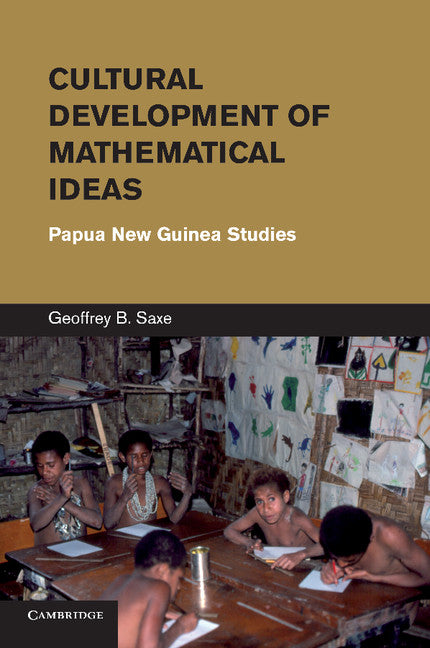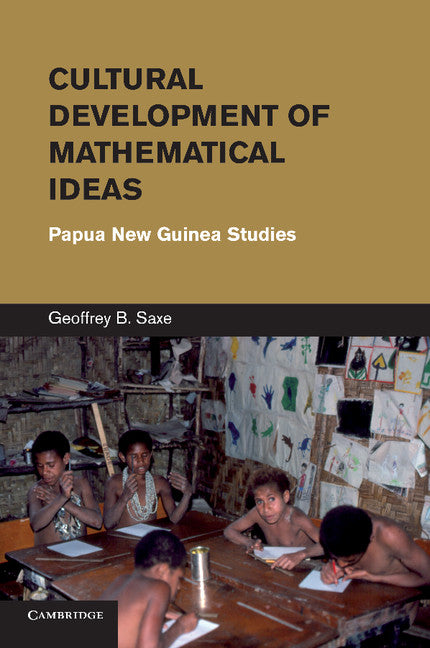Freshly Printed - allow 8 days lead
Couldn't load pickup availability
Cultural Development of Mathematical Ideas
Papua New Guinea Studies
Geoffrey Saxe traces the emergence of numerical representations and ideas as people participate in collective practices of daily life.
Geoffrey B. Saxe (Author)
9781107685697, Cambridge University Press
Paperback / softback, published 6 March 2014
400 pages, 120 b/w illus. 4 maps 24 tables
22.9 x 15.2 x 2.1 cm, 0.53 kg
'I can see at least three reasons why this book is a must-read for every mathematics education researcher. First, as an inexhaustible source of insights about numerical thinking and its development and also about human thinking in general, it can be trusted to provide the interested reader with a hearty serving of food for thought. Second, it is not every day that one sees a longitudinal study capturing a historical change in the making. This turns Saxe's story into something truly unique and precious. Finally, these [pages] of well-written text are too enjoyable a read to be missed.' Anna Sfard, Educational Studies in Mathematics
Drawing upon field studies conducted in 1978, 1980 and 2001 with the Oksapmin, a remote Papua New Guinea group, Geoffrey B. Saxe traces the emergence of new forms of numerical representations and ideas in the social history of the community. In traditional life, the Oksapmin used a counting system that makes use of twenty-seven parts of the body; there is no evidence that the group used arithmetic in prehistory. As practices of economic exchange and schooling have shifted, children and adults unwittingly reproduced and altered the system in order to solve new kinds of numerical and arithmetical problems, a process that has led to new forms of collective representations in the community. While Dr Saxe's focus is on the Oksapmin, the insights and general framework he provides are useful for understanding shifting representational forms and emerging cognitive functions in any human community.
Introduction
Part I. The Origins of Number-Enduring Questions: 1. Culture-cognition relations
2. Cultural forms of number representation used in Oksapmin communities
Part II. Economic Exchange: 3. Collective practices of economic exchange: a brief social history
4. Reproduction and alteration of numerical representations
5. Reproduction and alteration in currency token representations
6. Representational forms, functions, collective practices, and fu: a microcosm
Part III. Schooling: 7. A brief history: collective practices of schooling in Oksapmin
8. Unschooled children's developing uses of the body system
9. Children's adaptations of the body system in school in 1980: an unintended consequence of postcolonial schooling
10. About twenty years later: schooling and number
11. Teachers and students as (unintentional) agents of change
Part IV. Towards an Integrated Treatment of Socio-Historical and Cognitive Developmental Processes: 12. What develops? A focus on form-function relations
13. How do quantification practices develop?
14. Why do form-function relations shift?
Epilogue.
Subject Areas: Educational psychology [JNC], Cognition & cognitive psychology [JMR], Child & developmental psychology [JMC], Social & cultural anthropology, ethnography [JHMC], Psycholinguistics [CFD]


